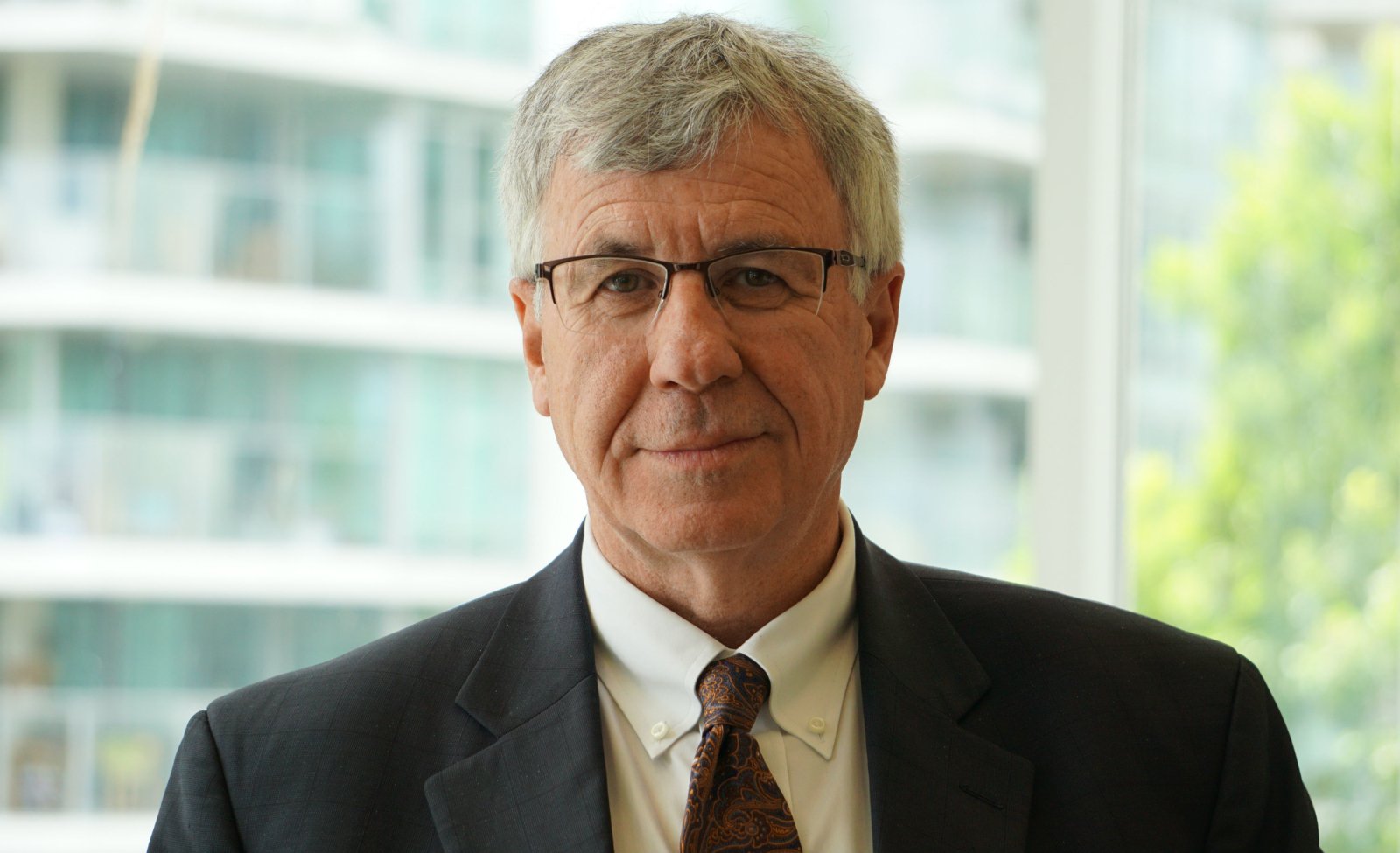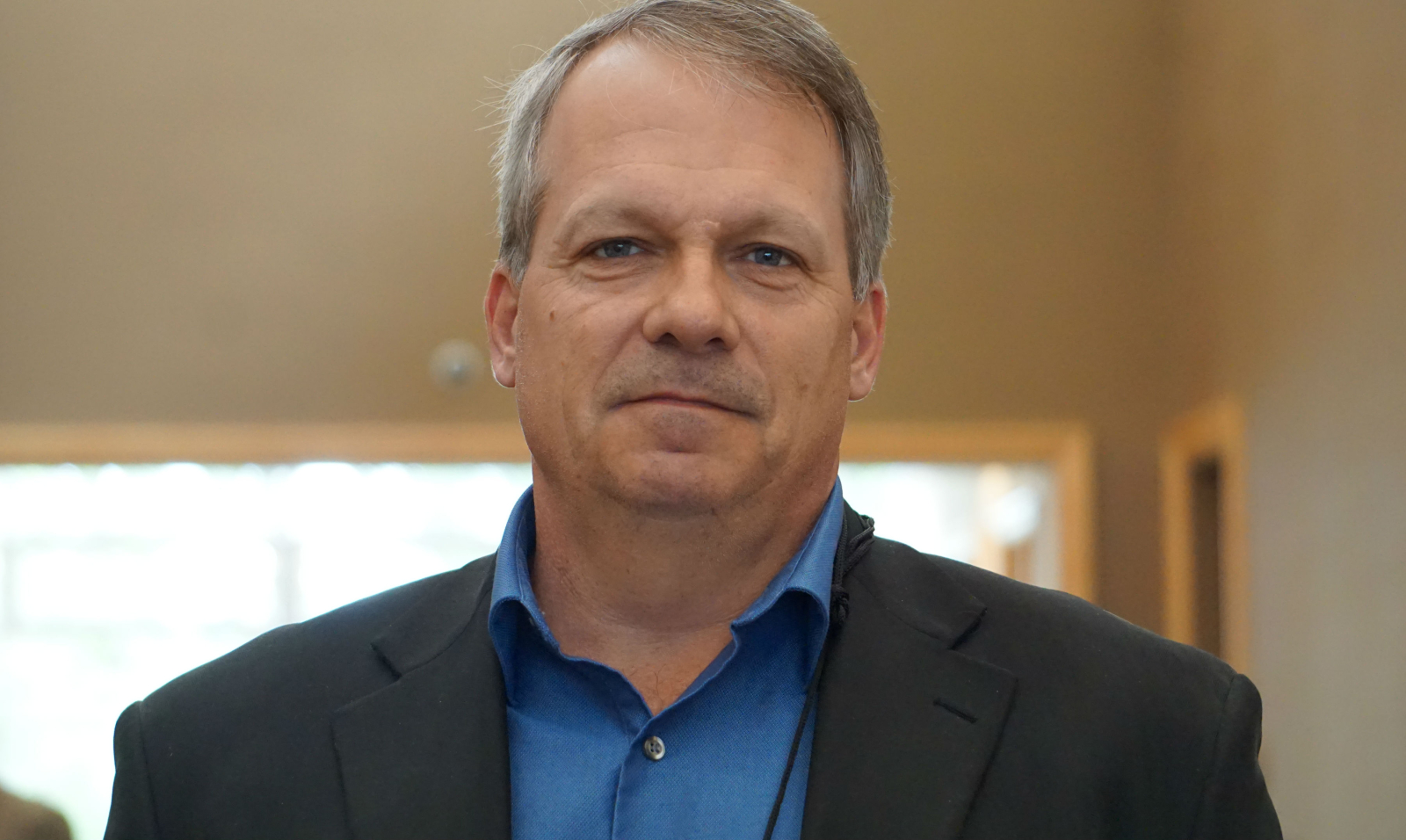The Canadian coal industry doesn't deserve to have a bad rap, says Coal Association of Canada (CAC) president Robin Campbell.
Coal-fired power plants are considered to be the biggest source of human-made carbon pollution in the world, but Campbell said the industry in Canada is not so bad. New technology is beginning to show that coal energy can be "just as clean, if not cleaner" than other resources such as oil and natural gas, he said.
The mined fossil fuel, used for producing steel, heat, and electricity, has been described by Greenpeace as "the single greatest threat facing our climate," but Campbell dismissed the environmental organization's claims as "rhetoric" at the annual CAC conference in Vancouver on Thursday.
“The misconception out there right now is that coal is dirty," he told National Observer in between panel discussions on the dwindling state coal around the world.
"It was talked about in Paris, it’s talked about by the federal government, and it’s being talked about in Alberta as being dirty. The fact of that matter is, as I say, by instilling new technology we can burn it as clean as everything else.”
His sweeping statements promptly drew ridicule from Greenpeace Canada, which called coal an archaic source of electricity. In an era when renewables like wind and solar energy are getting cheaper and more accessible, the head of Greenpeace Canada's climate and energy campaign director, Keith Stewart, said that coal is needed no more than a horse-drawn carriage.
Stewart, who has worked on removing coal power from Canada's grid since the 1990s, said the industry was in denial.
"Coal doesn’t make economic sense, it’s ecologically insane and it was a great energy source for the 19th century, but it has no place in the 21st century," Stewart told National Observer after the conference. “Basically, I think the coal industry is whistling past the graveyard, desperately trying to avoid looking at a future where they don’t fit in anymore."
Canadian coal industry in denial
During the conference, Campbell insisted that coal was still relevant, despite plummeting global market prices, and efforts from provinces like Ontario and Alberta to phase out emissions-heavy coal-fired power plants. His statement came only minutes after Teck Resources Ltd. — North America's largest producer of steelmaking coal — told conference participants that it has failed to meet its 2016 financial goals so far, and laid off nearly 600 employees since 2012 when coal production and prices started falling rapidly.

His claims that coal energy can be "just as clean" as other sources are also in dispute; while Teck for one, has successfully managed to reduce concentrations of selenium and nitrate in its treated water by 96 and 99 per cent respectively, corporations around the world are still struggling with crippling emissions issues. One initiative aimed at solving that problem is the Boundary 3 Dam in Estevan, Sask., which is currently piloting the world’s first and largest commercial-scale carbon-capture storage (CCS) project of its kind for a coal-fired power plant.
Run by SaskPower, the technology is capable of producing up to 115 megawatts of electricity and reducing greenhouse gas emissions by up to one million tonnes of CO2 each year — the equivalent of taking more than 250,000 cars off Saskatchewan roads.
“I think they’re hitting over 90 per cent [emissions] reduction right now," said Campbell. “It’s ready now, it’s happening right now. So we’re pushing for government and industry to get together and work on research and technology and patent that technology."
Emissions reduction tech not ready yet
Carbon-capture storage (CCS) is the process of separating the carbon from gases produce in electricity generation, and transporting it by pipeline or ship for underground deposit. And while Campbell implied that this innovation is ready for use in coal-fired power plants across the country, even Jim Linnell, manager of fuel business at SaskPower, admitted that "economically, it's unfeasible at this point."
“Can we clean it up enough and be efficient enough? Not quite yet, but we’re getting there," he said in an interview. "Technology has to catch up with what else [other energy sources] is out there so far. It makes it economically unfeasibly to go there because of the [low] price of natural gas as a direct comparison.”
Campbell also failed to mention a number of setbacks in the Boundary 3 project — a single retrofit of a coal-fired power plant to include the CCS technology costs more than $1 billion, and the Boundary 3 Dam is currently running at 40 per cent capacity. SaskPower, in the meantime, is paying millions of dollars to Cenovus Energy for failing to deliver carbon dioxide from the plant.
Campbell's denial did not surprise Greenpeace, which accused the CAC of grasping at straws.

Does renewable energy come at a cost?
“The coal industry just hasn’t kept up in terms of the industry and talking points, because now they’re saying the alternatives are more expensive but they’re not," said Stewart.
"There have been more than 100 coal plants that were planned and cancelled in the U.S. because natural gas plants are just much cheaper. If you were going to start building a new coal plant now, solar would be cheaper by the time you complete it, and wind and natural gas already are."
According to the CAC, Canada currently has 19 producing coal mines spread throughout B.C., Alberta, Saskatchewan, and Nova Scotia, with a number of new coal mines on the horizon and 25 coal projects currently going through governmental regulatory processes. The country has enough coal for 100 years of future production with Alberta sitting on a wealth of nearly 40 billion tonnes of it.
But Canada relies on coal-fired electricity for less than 10 per cent of its overall energy needs, despite that number being as high as 56, 55, and 46 per cent in Nova Scotia, Alberta and Saskatchewan, respectively. It does however, use coking coal for making steel — a substance found in wind turbines, one of the green solutions intended to replace it.
"I think there’s no energy source out there that doesn’t come with their detriments," Campbell explained. “When you look at the results of wind for example, how many wind turbines do you have to put up to replace coal? Where are they going to go? Who wants that in their backyard? We believe we should have a diverse suite of options."
Alberta's new climate plan unwise, says CAC
He extended the argument to Alberta, which taking a leaf out of Ontario's book, recently pledged to begin its own coal phase-out in 2018. The plan "isn't going to do what they want it to do," Campbell added, pointing out that Ontario's power prices soared after its own transition was completed in 2014.
“It’s going to put undue hardship on consumers and basically deflate the investment climate of people wanting to come to Alberta and do business," he explained. "One of things they’re looking for is reliable energy. We have the ability to provide that without putting an added burden on consumers.”
He supports reducing emissions in the coal industry, he added, and said that if the federal governments invest heavily in the industry for the next five to 10 years, it could make a "real difference."
Stewart said he doesn't think the world will wait that long.
"Why would you want to pay more for a dirty power source?" he asked. "This is the crisis facing the coal industry and the reason coal companies are going bankrupt around the world around the world is, ‘Oh I can pay more for something that’s going to give my kids asthma and kill people, or I can get clean energy.'”
Earlier this year, Peabody Energy, the world's largest private-sector coal producer, filed for bankruptcy in a U.S. court, following in the footsteps of more than three dozen others since 2012.





Comments